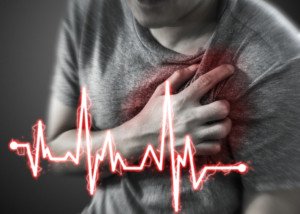Obesity in adults is a risk factor for a blood clot that can cause a fatal pulmonary embolism.
But what about childhood obesity?
Are overweight children more susceptible to a DVT that can then break off, travel to the lungs and end their life in minutes?
Not only are more and more kids, relative to the general population, becoming obese, but there’s also an ever-increasing number of morbidly obese kids.
It’s only natural to wonder if obese, especially very, children face the same risk of developing a deep vein thrombosis and then pulmonary embolism as do obese adults.
How a Pulmonary Embolism Kills
A DVT develops in a lower extremity. A piece of it dislodges and in just moments, travels to and through the heart, where it gets picked up in the re-oxygenated blood flow in the main pulmonary artery.
The main pulmonary artery splits off into the left main and right main pulmonary arteries, and these supply the lungs with this re-oxygenated blood.
But if there’s a clot in it, it’ll embolize in a lung.
Depending on its size, it will not be immediately life threatening but will cause shortness of breath.
However, a large fragment can block the point at which the main pulmonary artery splits off into the left and right. This is called a saddle embolism and may be immediately fatal.
Childhood Obesity and the Pulmonary Embolism
“Pulmonary embolism in children is rare when compared to the incidence in adults,” says Joi Lucas, MD, medical director of pediatric pulmonology at Nemours Children’s Clinic and chief of pediatrics, Lakeland Regional Hospital, FL.
“Typically PE in kids has been identified as a complication of hospitalized children with central lines or underlying conditions such as cystic fibrosis, congenital heart disease, cancer and inherited genetic disorders predisposing to blood clots.
“In adults, obesity as defined by an elevated body mass index (BMI) is a known risk factor for venous thromboembolism (VTE) and pulmonary embolism (PE).
“Many studies have shown that as BMI increases in adults, the risk for VTE is greater.
“However, now in children, obesity (BMI>95th percentile) is increasingly recognized as a possible risk factor for VTE and PE.
“The theories for the mechanism explaining this suspected association are the same for children and adults.
“One theory suggests children and adults who have centrally located adipose tissue may have increased intra-abdominal pressure and decreased venous return from the lower extremity, facilitating decreased blood flow and blood clots.
“Also in children obesity has been associated with higher levels of fibrinogen and increased ability to generate blood clots.
“Obesity rates in children have risen dramatically in the last decade.
“It is critical that parents and kids understand the importance of maintaining a healthy weight by eating a healthy diet and exercising to promote heart health and decrease the risk of obesity related complications including VTE and PE.”
 Dr. Lucas is double board certified in pediatrics and pediatric pulmonology. She developed the Asthma KidCare Go-Bag, a carrying case and organizer for asthma and allergy medications; available on Amazon. Follow her on Facebook, Instagram and Twitter @Dr.JoiMD.
Dr. Lucas is double board certified in pediatrics and pediatric pulmonology. She developed the Asthma KidCare Go-Bag, a carrying case and organizer for asthma and allergy medications; available on Amazon. Follow her on Facebook, Instagram and Twitter @Dr.JoiMD.
 Lorra Garrick has been covering medical, fitness and cybersecurity topics for many years, having written thousands of articles for print magazines and websites, including as a ghostwriter. She’s also a former ACE-certified personal trainer.
Lorra Garrick has been covering medical, fitness and cybersecurity topics for many years, having written thousands of articles for print magazines and websites, including as a ghostwriter. She’s also a former ACE-certified personal trainer.
.










































